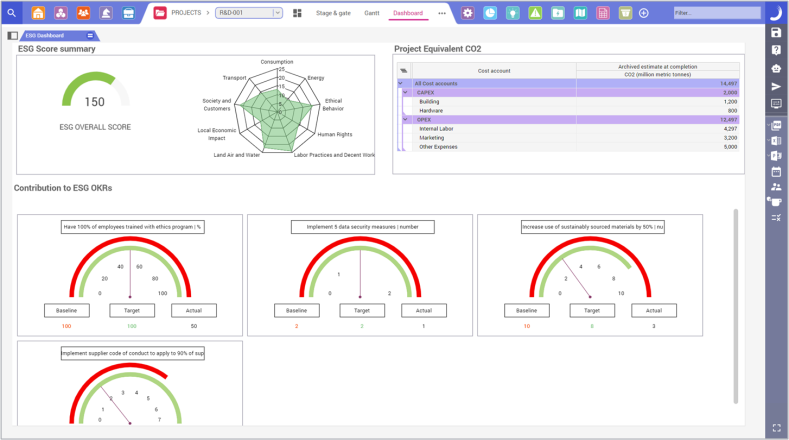The road to meeting Environmental, Social, and Governance (ESG) standards is destined to be a long one that will take several years if not decades to navigate. ESG is a framework used to measure an organization's practices and performance on various sustainable and ethical issues. It poses plenty of challenges to any organization, but it’s also packed with chances to grow and innovate, especially when we've got Project Portfolio Management (PPM) tools by our side.

Facing the ESG Challenges Head-On
Let’s talk about the hurdles. On one hand, we have customer and employee health and safety. This includes addressing risks from accidents, terrorism, and engineering problems. Any of these can impact revenues, especially in times of changing demands, like during a pandemic or a regional skirmish. Safety is a massive deal in A&D, but adding ESG goals increases the stakes even more. It’s not just about compliance; it's about embedding these safety values into the core of operations.
Next, we've got the challenge of decarbonization. It means making things in a way that's kinder to our planet. For example, the aircraft industry alone contributes approximately 2%-3% of global greenhouse gas emissions. Finding alternatives to fossil fuel-powered engines is a tough challenge. Near-term creditors may not be significantly impacted but it does require significant long-term investments and technological breakthroughs. This isn’t a quick fix; it’s a big change that means looking at everything we do and finding greener ways to do it.
“The biggest challenge is the wide gap between the cost of a decarbonization strategy and the value created for stakeholders.” Mike Hayes, Climate Change and Decarbonization Leader, Global Head of Renewable Energy, KPMG International
When it comes to integrating ESG goals into business plans, it also relates to how we source raw materials for products, from whom we source them and to whom we sell the final products to. It's about fitting these new goals into our strategies. That some smart planning.

PPM: The Helping Hand in ESG Goals
Here’s where PPM tools add significant value. They line up our ESG targets with the big-picture goals. These tools are all about the numbers. They help us figure out where to put our resources and how to balance the immediate needs but also align them with future plans.
When it comes to risks – and let’s be honest, there are quite a few – PPM tools are like our trusty guides. They help alert us and spot trouble before it happens and make sure we're checking all the boxes to be environmentally and socially responsible.
Managing resources is another spot where PPM tools shine. They let us see everything we have and need, so we can use our people, money, and materials in the best way possible for our ESG projects.
Turning ESG Challenges into Other Opportunities
Now, the thing is, all these ESG challenges open up some pretty exciting opportunities. For starters, a focus on being more sustainable can lead to some amazing new products and ways of doing things. Companies that jump on this early can lead the pack in eco-friendly practices.
There's building trust with everyone who has a stake in what we do. With PPM tools, we can share clear, up-to-date info about our ESG efforts. This builds stronger bonds with our investors, customers, and teams, boosting our reputation and building brand equity.
Look Ahead
The journey to ESG compliance in A&D is definitely a marathon, not a sprint. But with PPM tools in our toolkit, we can tackle the challenges and make the most of the opportunities that come our way. These tools help us stay on track with our strategies, manage risks, and make the most of our resources. They’re key in not just meeting ESG standards but really excelling in them, turning a long journey into a rewarding adventure.
Click here to read the Planisware brochure for Aerospace & Defense



